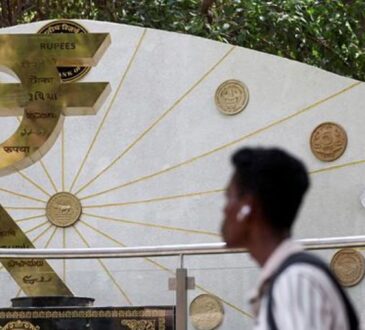With the US GDP down 0.2%, are we seeing early signs of policy induced taxation risk according to you?
Arnab Das: Look, there is an element of that. What happened to drag down GDP growth in the first quarter was a significant increase in imports which sort of arithmetically drags down growth.
But that is not really a very useful indication. The bigger issue is that we have had a lot of policy uncertainty which got going in the first quarter but really took off with Liberation Day and all the volatility around the tariffs in the first weeks of April which is after the Q1 GDP report period.
So, we have yet to see the full effect of all the uncertainty to do with trade policy and all the uncertainties to do with what you might call the culture war. The action Trump administration is taking against American institutions and kind of the way of life in many respects that they would like to change.
Some of the uncertainty has been subsequently reduced by the roll back from the extreme levels of tariffs announced against China and also the full whack of the reciprocal tariffs that were very sharply escalating to the baseline of 10%. And now we have had last night another legal intervention by which a US court has ruled Trump’s use of the so-called AIPA Act as unlawful.
So, that will probably delay the onset of clarity on the trade war, but also, perhaps the damaging effects of the tariffs and the trade war themselves to some extent at least as far as markets are concerned because we seem to be stabilising. On top of that, we have these fiscal issues that you were just discussing. If you look at the markets, what you are seeing is the 10-year bond is in a range, there has been some weakening in the dollar, maybe significant amount of weakening in the dollar, and stocks are down although not that much, barely at all. The bigger issue in a way is that other currencies other than the dollar including some emerging market currencies and other equities including some emerging market equities are doing fairly well. So, we have a bit of a kind of soft dollar, bullish rest of the world environment going on. I think that is partly because that is normal and natural or at least we are used to it when the dollar weakens. Part of it is that there is a rise in home bias if you like right, that investors are pulling money out of the US and putting it to work to some extent back at home whether that be in the Euro zone or Japan or even in some emerging market countries. And so, we are seeing perhaps some expectations of a rebalancing of global growth, may be less dependence on US growth. Of course, it is early days yet and there is still a lot of overhang of uncertainty, but that seems to be the general direction of travel. US is slowing down. Maybe it will slow down more sharply if the trade war escalates again. There is a lot of uncertainty that will have some negative impact on investment and on consumers, particularly on durables, and to some extent the rest of the world will pick up some, but maybe not all of the slack. So, it is maybe a bit more of a challenging growth environment, but not terrible and that is what you are seeing playing out in the markets.
Given what Santosh is saying, it looks great in terms of the trajectory as well. How do you in your opinion interpret the dip in government spending, a strategic cut or is it a concern for future growth?
Arnab Das: Look, I think that was a time when there was a lot of efforts by Doge so-called Department of Government Efficiency to cut spending in various ways and some of those ways of spending cuts are likely to persist for a while, some of them are being challenged as to their legality, and some of them have been sort of revised away if you like because Doge was not able to make all the cuts in personnel or in spending that maybe Elon Musk at the time had intended and so I think that is why we had a bit of a flip around in the last couple of weeks from real fear and concern around focused, almost exclusively on the trade issue, to all of a sudden flipping on to fiscal issue because we got this one big beautiful bill through reconciliation that would lead to a significant level of deficits being extended at the current rate of 6.5-7% of GDP as far as I can see and maybe beyond without some of the offsetting spending cuts that they had clearly intended to do through Doge and offer other efforts to help bring the budget closer to balance.
I think where we are now is that the market is digesting that 10-year bond yields have moved around quite a bit, very long end of the curve from 10 years to 30 years in the US and elsewhere in the rest of the world it has to be said has steepened meaningfully including in Japan which although it has a large budget deficit and a large debt, has a current account surpluses, a high savings economy, so you have a lot of these fiscal pressures showing up in the long end of yield curves all over the world and in so-called term premia so there are these challenges in the US, there also similar and other challenges in other parts of the world.
So, I sort of agree that it is not going to be that bad. I do not know if I would be outright bullish because there are still a lot of uncertainties and we need to recognise that the trade war, although it has been constrained by Trump’s own pullbacks and now this court rulings, it is still there.





